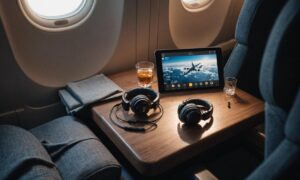Flying can be an exciting experience, but it comes with its own set of rules and regulations, particularly when it comes to the amount of liquids and substances you can bring on board. In this comprehensive guide, we will explore the intricacies of how many ounces you can carry on an airplane and navigate through the regulations imposed by aviation authorities.
Liquid Restrictions
Air travel is subject to stringent security measures, and one of the key restrictions involves the quantity of liquids that passengers can bring in their carry-on luggage. The Transportation Security Administration (TSA) sets guidelines to ensure the safety of all passengers aboard. According to these regulations, liquids must be stored in containers of 3.4 ounces (100 milliliters) or less, and all containers must fit into a single quart-sized, resealable plastic bag.
Passengers are allowed to bring multiple containers as long as they adhere to the 3.4 ounces limit per item and fit within the prescribed quart-sized bag. It’s crucial to pack liquids in a transparent bag for easy inspection during the security screening process.
Exceptions and Special Considerations
While the general rule is to limit liquids to 3.4 ounces, certain exceptions apply. Medications, baby formula, breast milk, and other essential medical items may be carried in quantities exceeding the standard limit. However, passengers should be prepared to declare these items and may be subject to additional screening.
Additionally, duty-free liquids purchased at the airport or on board the aircraft are permitted, even if they exceed 3.4 ounces. However, these items should be placed in a secure, tamper-evident bag, and passengers should retain proof of purchase.
Non-Liquid Restrictions
Apart from liquid restrictions, there are guidelines for carrying other items on board. For instance, sharp objects, sporting goods, and firearms are subject to specific regulations. It is essential to check with the airline and relevant authorities to ensure compliance with these rules.
In conclusion, understanding how many ounces you can carry on an airplane involves adhering to the TSA regulations, especially concerning liquids. By packing your liquids in a transparent, quart-sized bag and being aware of exceptions for essential items, you can navigate the security process smoothly and enjoy a hassle-free flight. Always check with the airline and relevant authorities for the most up-to-date information on regulations to ensure a stress-free travel experience.
Security Screening Process
In addition to liquid restrictions, passengers must undergo a thorough security screening process before boarding an airplane. This involves passing through metal detectors, having carry-on items scanned by X-ray machines, and sometimes undergoing additional security checks. It’s crucial to be familiar with these procedures to streamline the boarding process and avoid unnecessary delays.
Electronic Devices
Electronic devices have become an integral part of modern travel. While you can carry devices such as laptops, tablets, and smartphones on board, there are specific guidelines regarding their usage during different phases of the flight. Passengers are typically required to turn off electronic devices during takeoff and landing, and larger devices may need to be stowed away in designated areas.
| Device | Usage Restrictions |
|---|---|
| Laptops | Must be stowed during takeoff and landing. |
| Smartphones | Can be used in airplane mode throughout the flight. |
| Tablets | Usage restrictions similar to laptops. |
Frequently Asked Questions
- Q: Can I bring food on an airplane?
- Q: Are there restrictions on carrying sharp objects in carry-on luggage?
- Q: Can I bring a pet on board?
A: Yes, passengers are allowed to bring solid food items on an airplane. However, liquids or sauces should adhere to the specified liquid restrictions.
A: Yes, sharp objects are subject to specific regulations. It’s advisable to check with the airline and TSA guidelines to ensure compliance.
A: Airlines have policies regarding traveling with pets. Passengers should contact the airline in advance to understand the requirements and make necessary arrangements.
See also:






